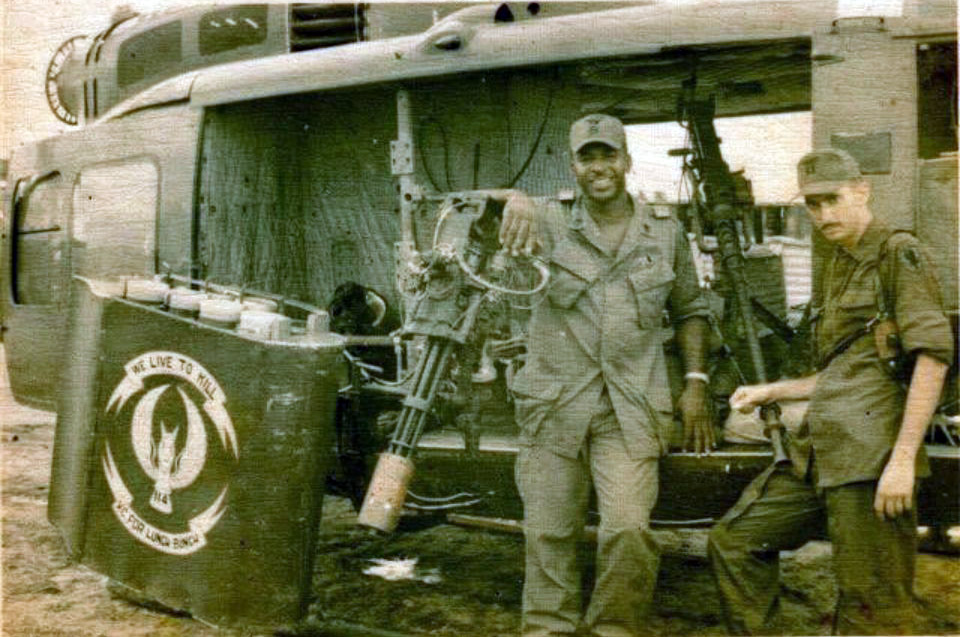Copy that. Adjusted fire.
General Richard G. Stilwell in his specially installed armored pilots seat.
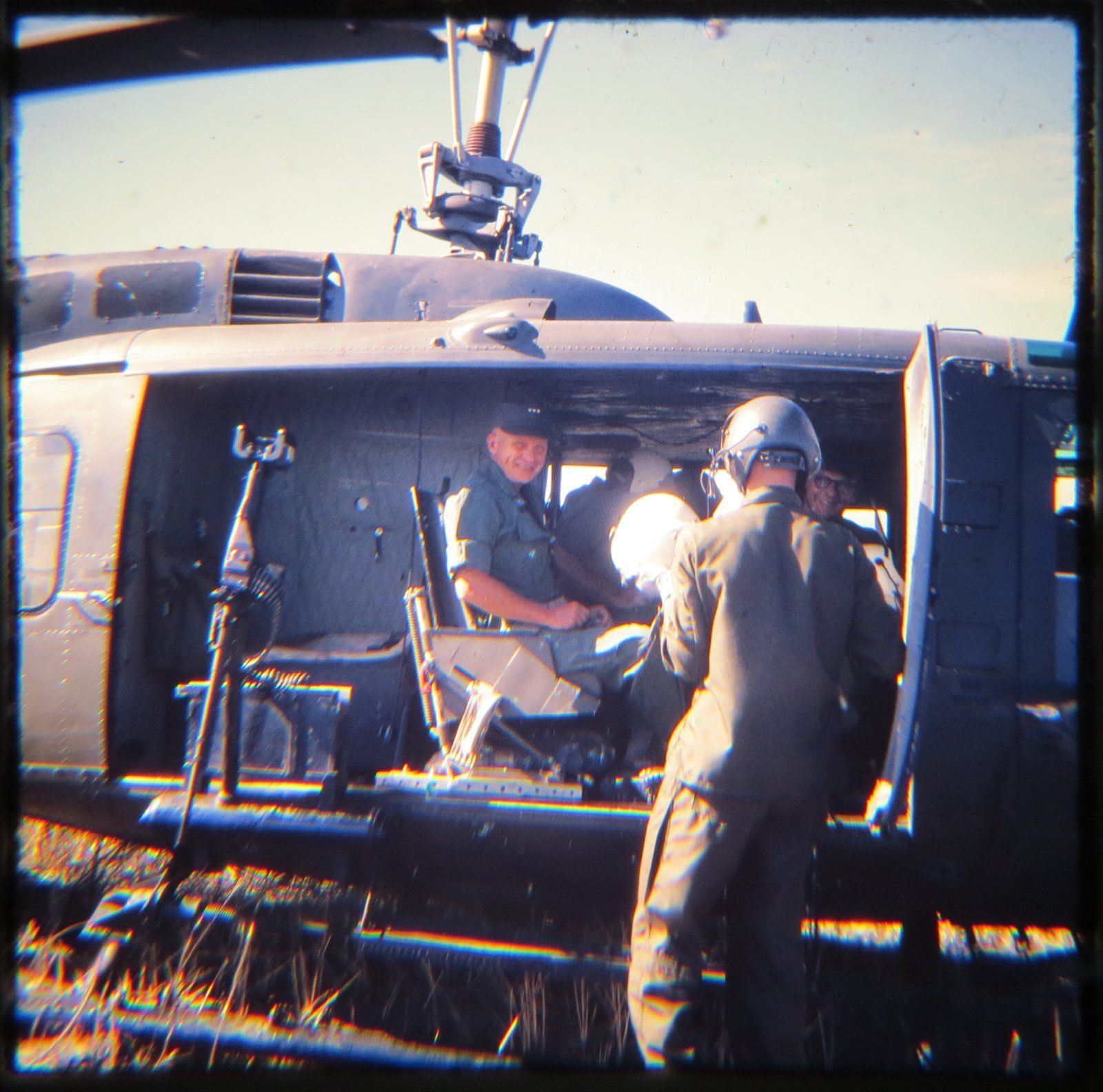
Copy that. Adjusted fire.
General Richard G. Stilwell in his specially installed armored pilots seat.

Late reply but yes the XM15 canister cluster was used on and dispensed from Hueys during Vietnam. I’m hunting my own files for an example of these actually mounted on the universal mount of a gunship in Vietnam. I know I have it just have to find the image.
Here are just a few images of the E158 CS cluster munition in the meantime. This was essentially the M165 canister cluster without the pylon mounts and longitudinal rack. The method of deployment shown was SOP versus dropping them from a gunship.
1969 This helicopter from the 25th Infantry Division is loaded with CS Riot Gas Canisters. Photo by SP5 D.R. Goff
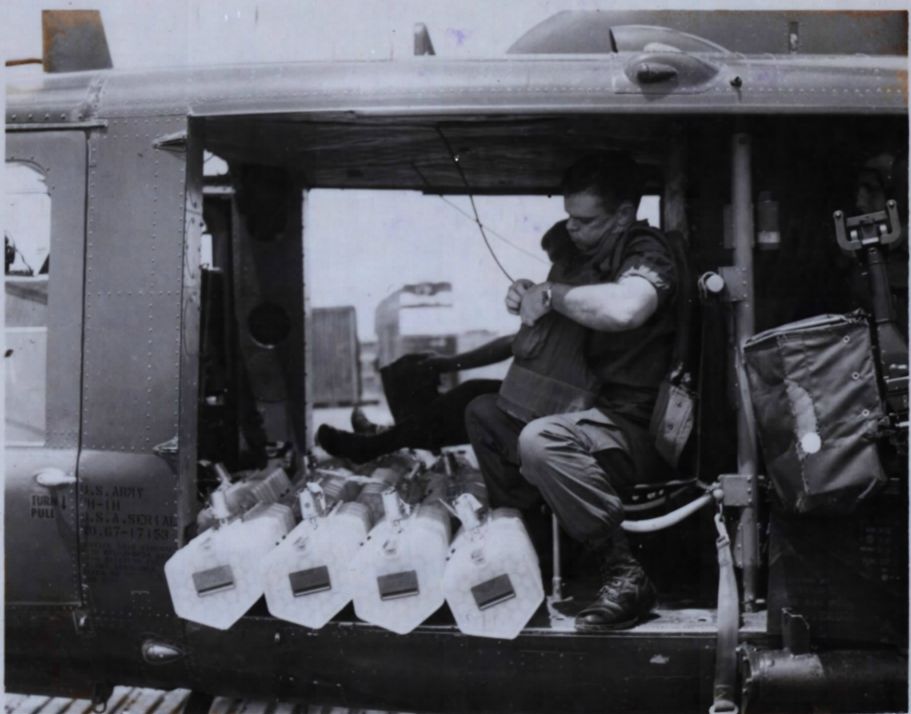
Dropping CS Riot Gas canisters July 1969. Photos by Dave Ondrey A Co 227th Assault Helicopter Battalion
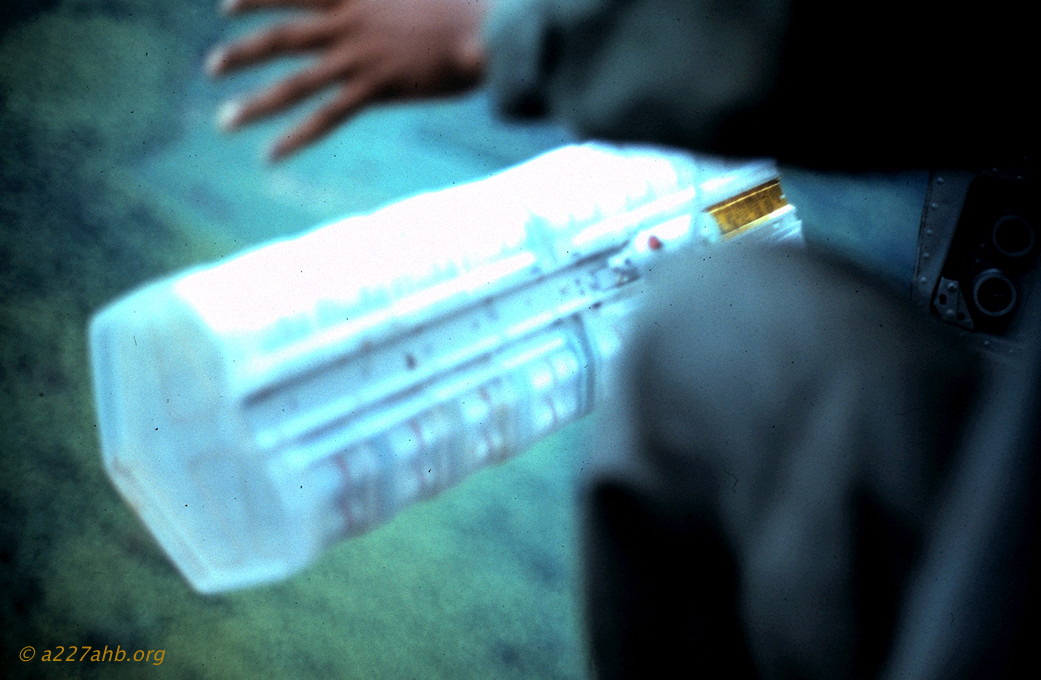
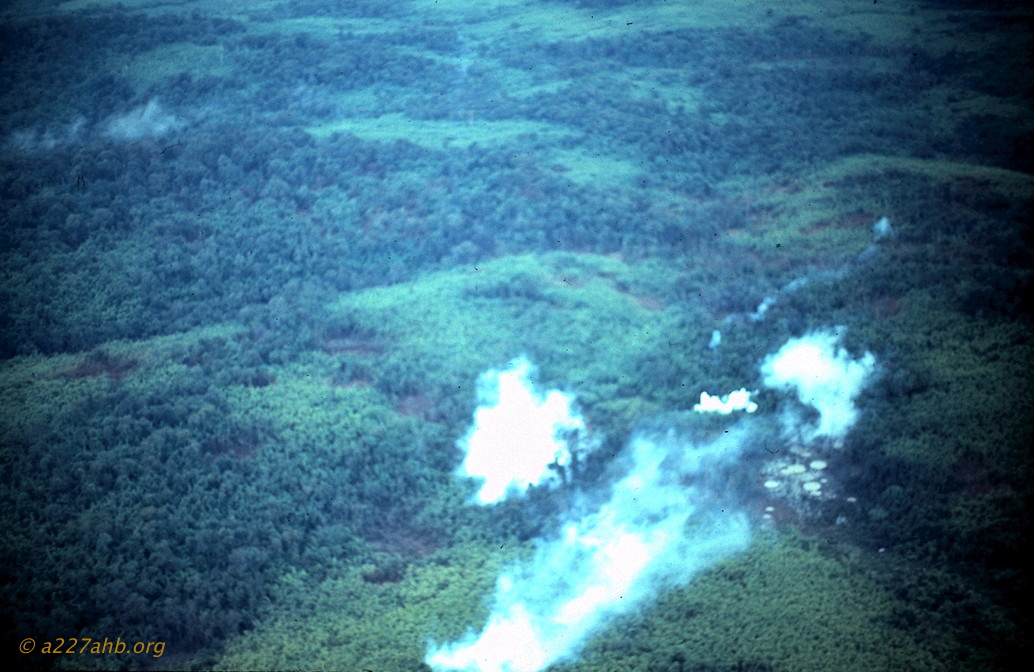
Given the dangers of the mission profile pilots flew with gas masks on if they had them. Also, it’s a bit of oxymoron to say flying CS gas cannister and having them thrown out of the helicopter wasnt anymore dangerous than any normal day of flying in Vietnam considering it was a war zone. Just added another layer to the onion.
The full details of Ron’s adventure appeared in the July/August 2003 VHPA Newsletter:
Ron says: ‘To the best of my knowledge, this was the only B Model gunship to drop napalm during the war. While in Qui Nhon one day I met an USAF Master Sergeant who was in charge of the ammo dump. He gave me a tour of the facility and I became interested in the napalm bombs. I asked him to tell me exactly how they operated. The more I learned, the more intrigued I became. I ended up trading him a bottle of Scotch straight across for 4 napalm canisters, 4 igniters and an appropriate amount of powder to turn JP4 (standard helicopter jet fuel) into flaming jelly.
My platoon leader, Captain Bob Wright, decided that he would fly the aircraft and I was to be in the left seat as the “bombardier.”’ Ron goes on to detail the events to the next two days when they dropped all four bombs. Interesting reading for sure!! He concludes with, ‘As it turns out, napalm dropped from a UH-1B at 80 knots really doesn’t do as well as if dropped from an F4 at 250 knots. It only spreads out about 50 feet or so. So we went back to our 2.75” rockets, 40mm grenades, and 7.62mm machine guns and let the AF have the firewater mission.’
A UH-1B from the Crocodile Platoon, 119th AHC - Early 1966. This photo was taken of VHPA member Ron Richtsmeier at Lane Army Heliport just west of Qui Nhon.
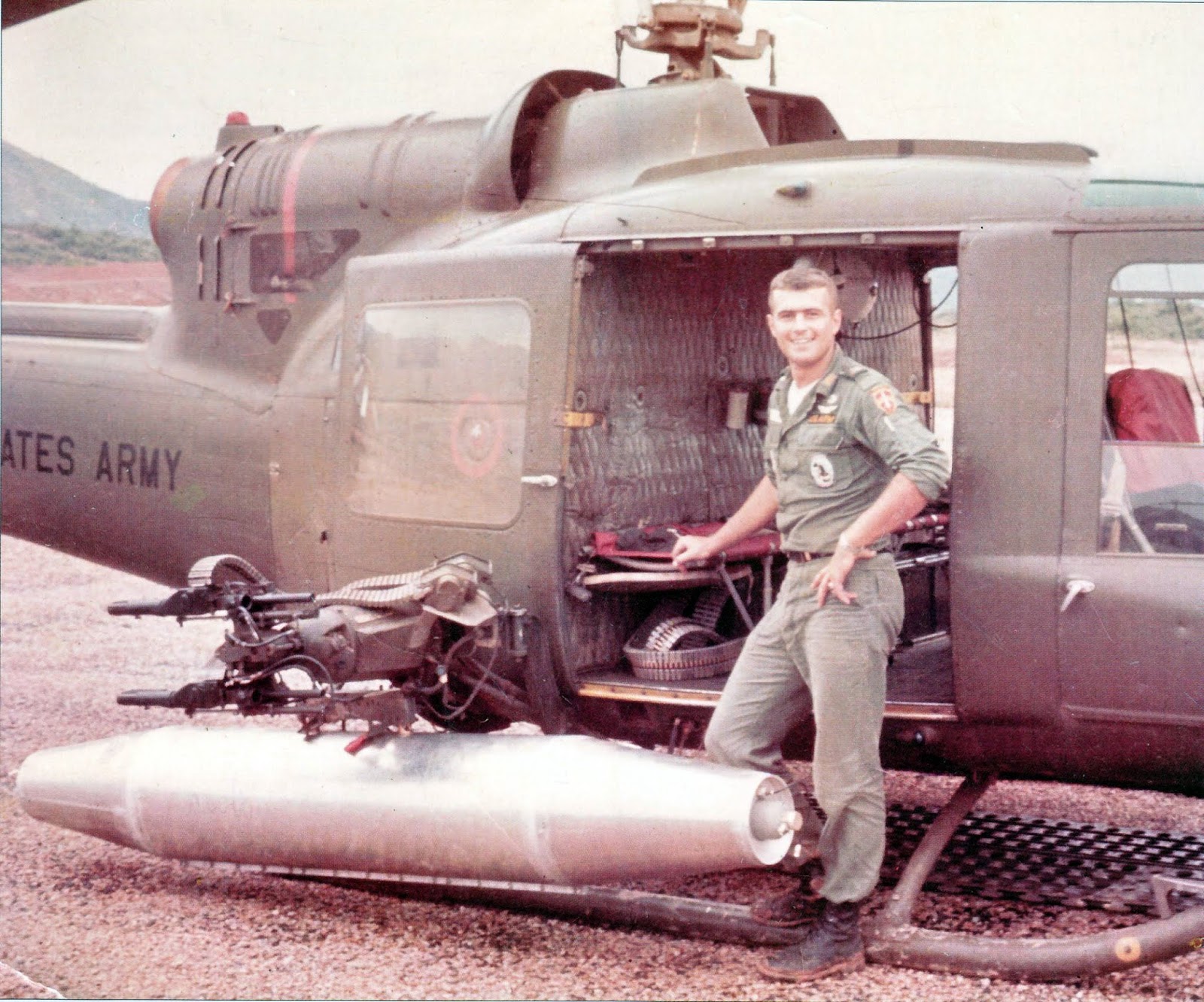
Andy, hope you are doing well since you first posted this 11 years ago. My how time flies!
I have some more detail on the 114th Assault Helicopter Company ‘Bug Ship’/"Vihn Long Bugship’.
Bug ship was just a generic term for this particular unusual Huey. Those who crewed it called themselves ‘Hunter Killers’ and this is what was painted on the avionics nose panel which survived and was brought back from Vietnam. While researching FLIR in Vietnam I talked with one of the gunners who flew on this ship, Spc4 Evan Pinther seen here in his office, who also worked the FLIR program run by ACTIV (Army Concept Team in Vietnam).
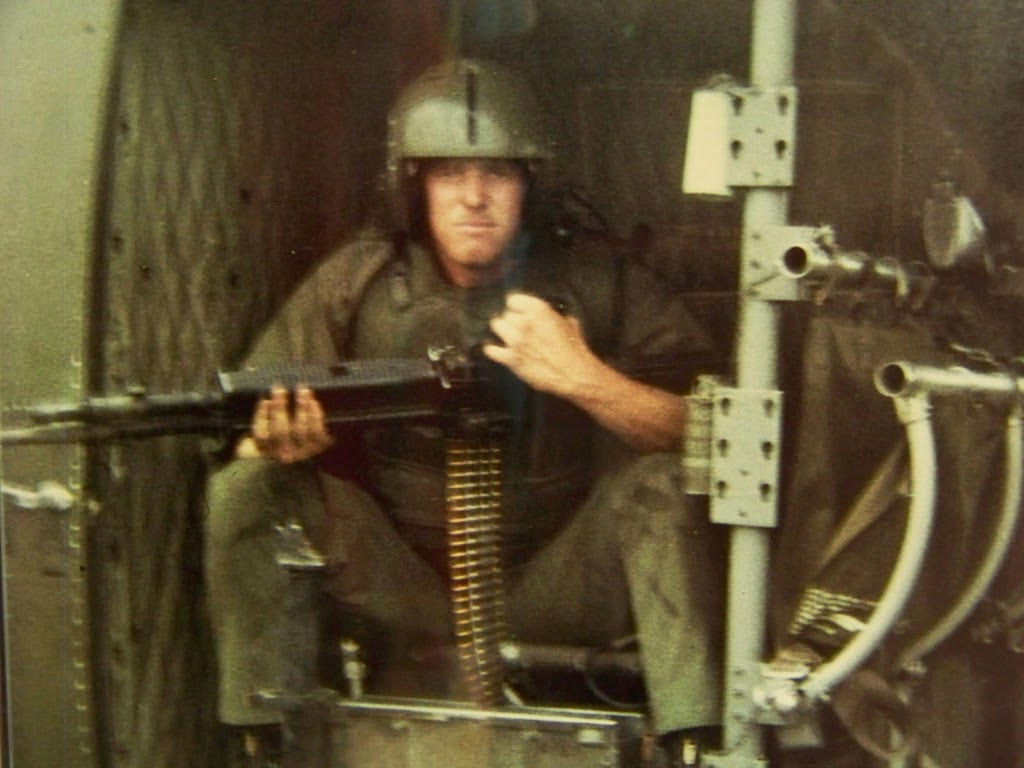
Not only was this ship used on perimeter flare missions at night it was also the unit smoke ship utilizing the XM52 Smoke Generating Subsystem.
The crew consisted of and alternated between: Capt. Wruble - Capt. Gutz Willer - Capt. Papapietro - WO1 Young - W01Bollech - Spc4 Musselwhite - Spc4 Brisbin - Spc5 Wallbridge - Spc4 Pinther - Spc4 McGinnis
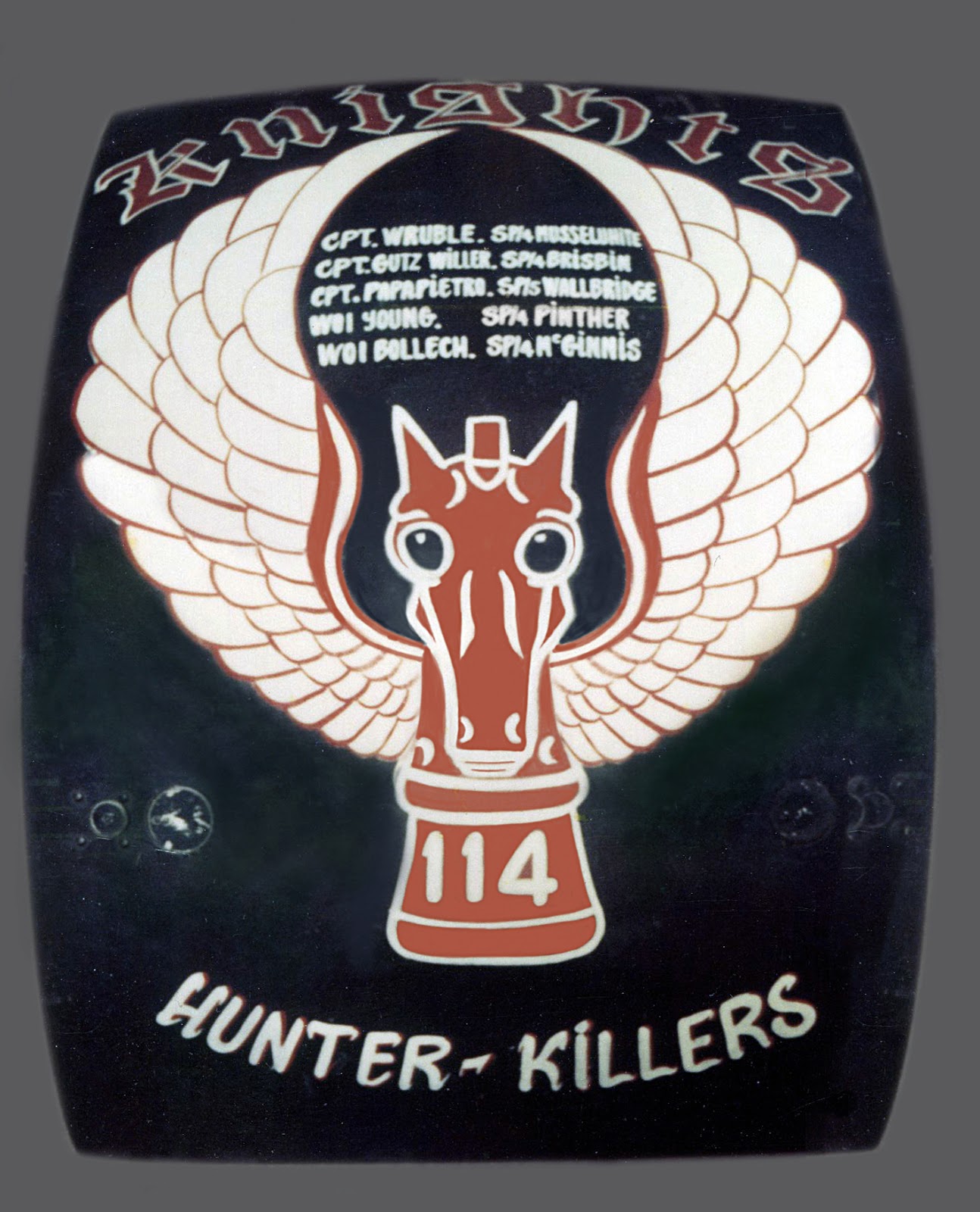
Here is a picture courtesy of Evan Pinther showing the unique sheet metal flare container built by the skinners that attached to the M21 gun mount. As you noted the Bug Ship was also armed with M134 miniguns and a .50 Cal for some superior firepower. Note the spray nozzle at the exhaust which was part of the smoke generator system. The M134 was Sagami pintle mounted off one side of the M21 rather than the floor mount common on Nighthawks. Ma Deuce got the standard pig iron brace mounted to the floor rings.
